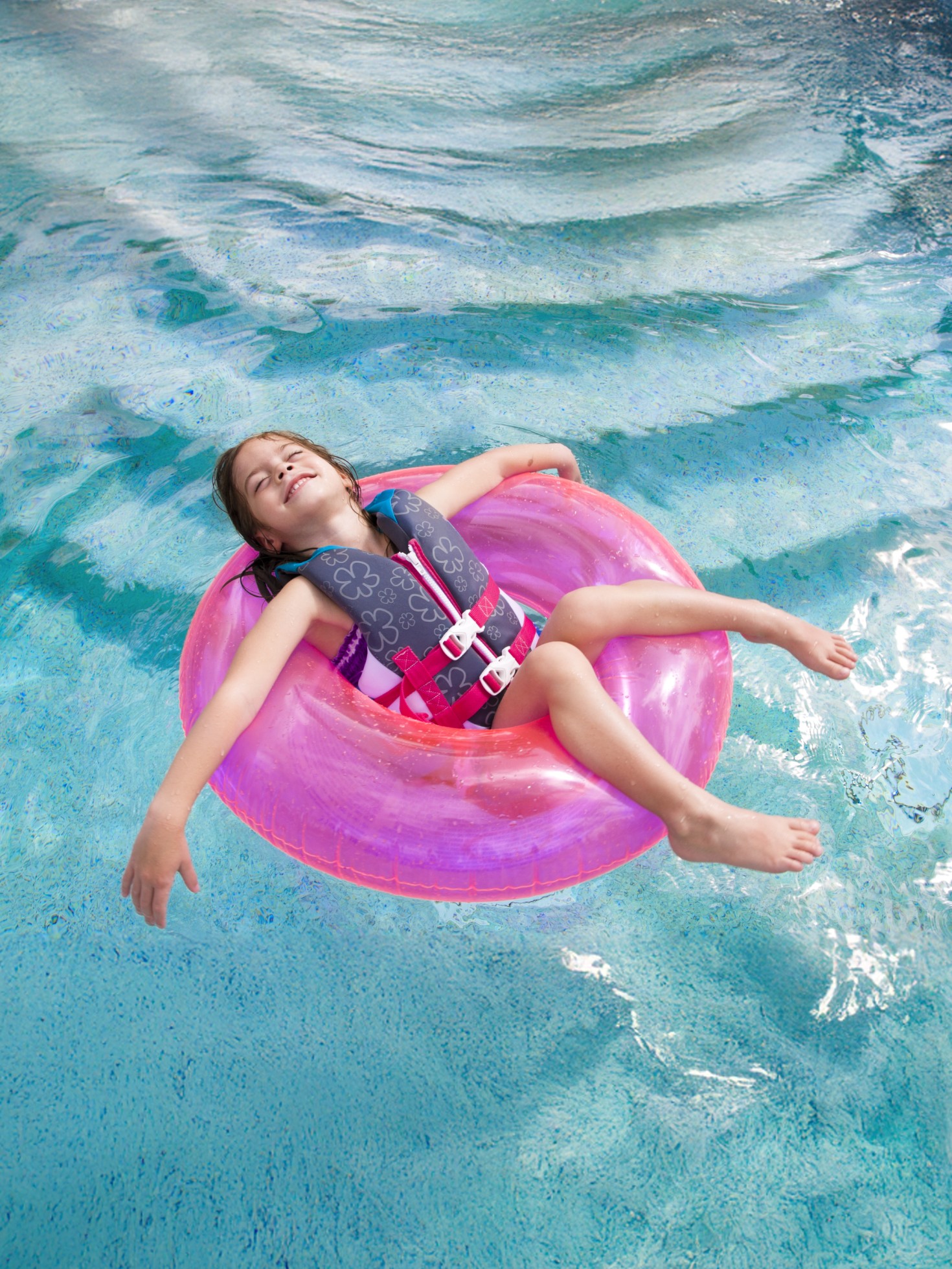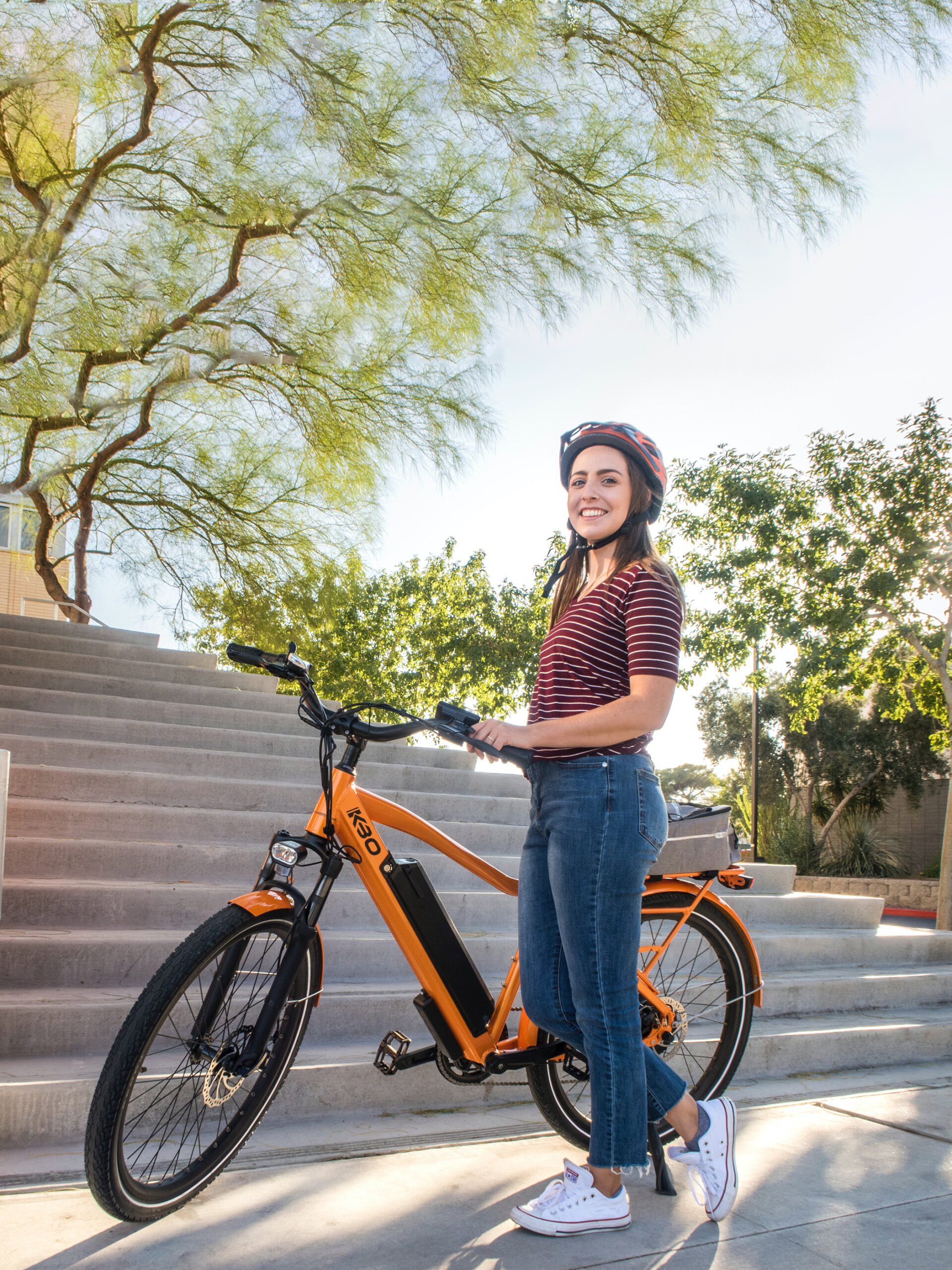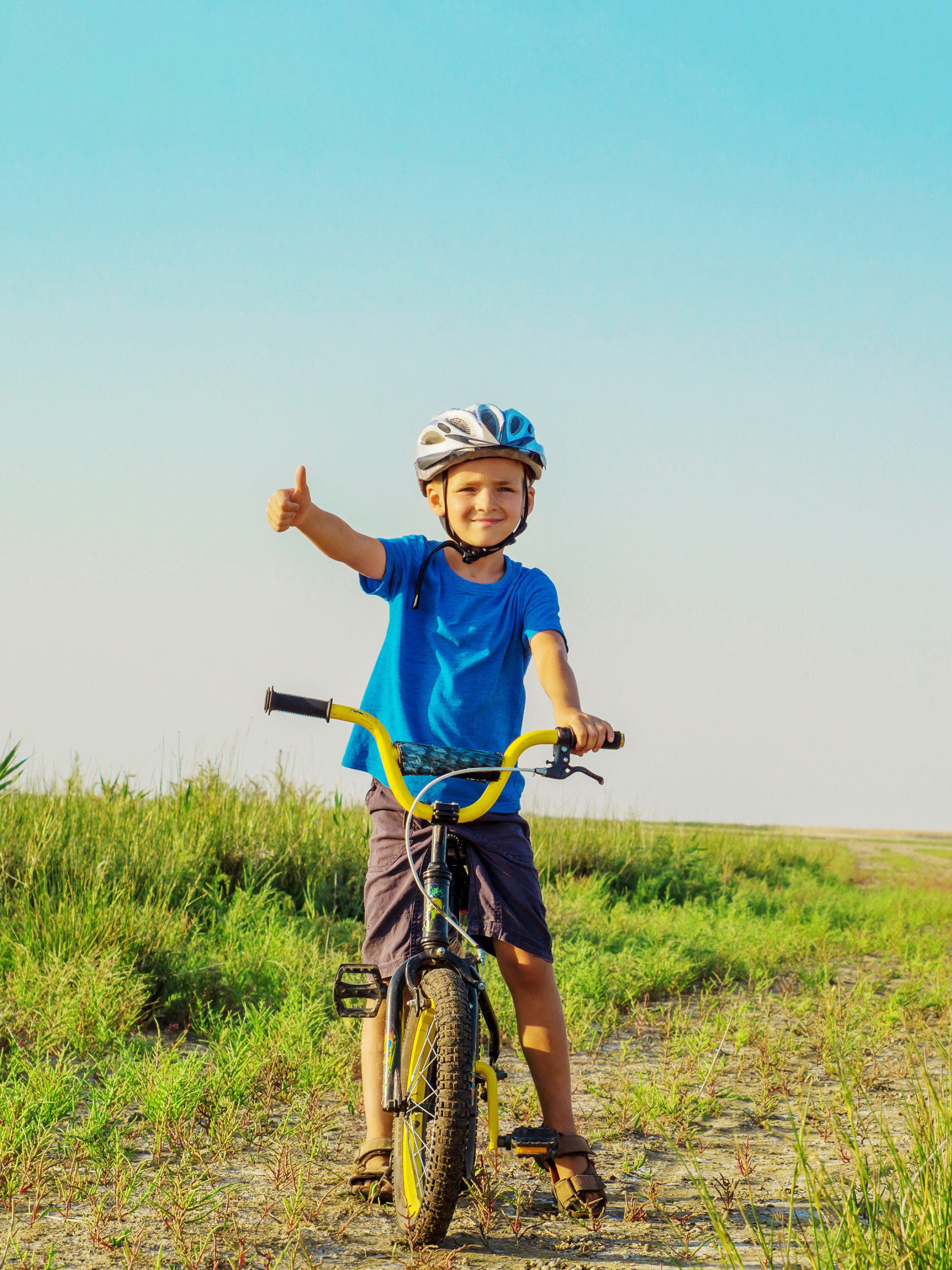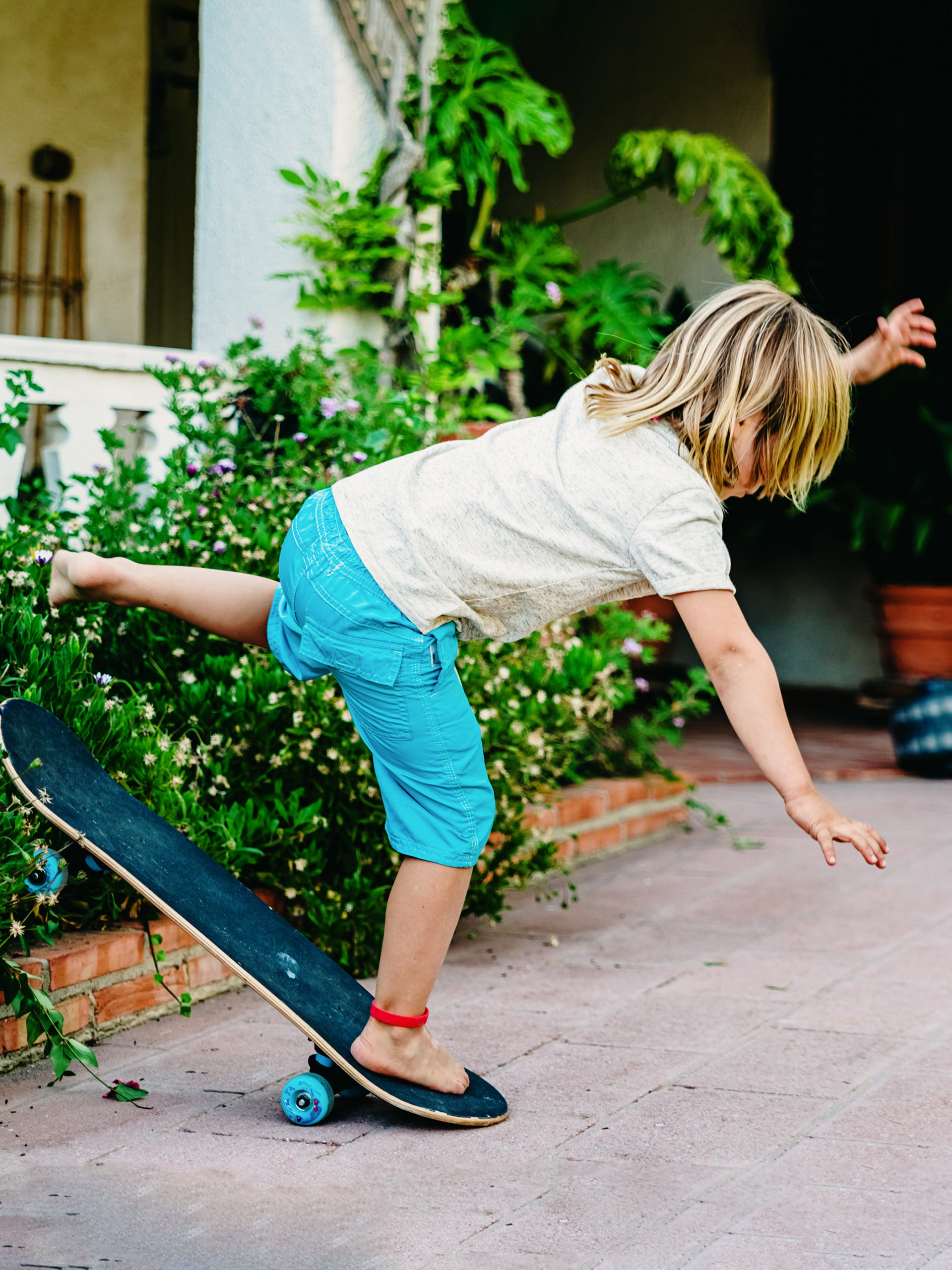SAFETY GUIDE
Bike and Helmet Safety
Bike safety is essential for kids and teens to prevent accidents and injuries. Bike safety begins with wearing a helmet properly. This page provides tips from the pediatric experts at CHOC on helmet safety, bike safety rules, and other important measures to help children and teenagers stay safe while riding their bikes.
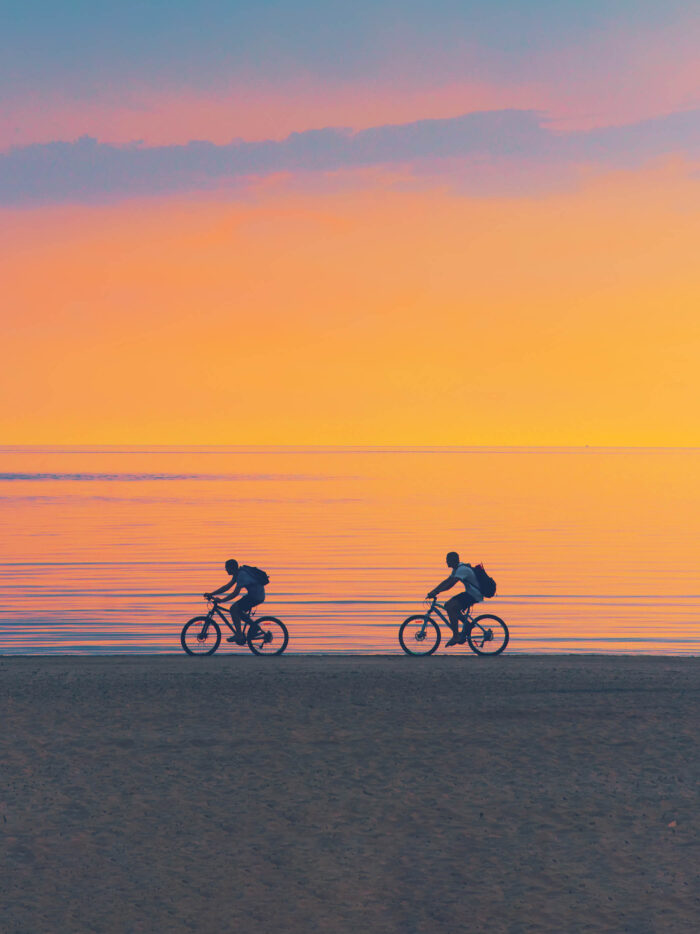
Safety Programs and Partners
Safe Kids Orange County
www.safekids.org
OC Injury Prevention Coalition
OC Drowning Prevention Task Force
drowningprevention.org
Stop the Bleed
stopthebleed.org
Bike Safety Overview
Bike riding is a great way to get exercise and spend time as a family. But before you and the kids go outside, be sure you’re up to date on how to do it safely. Here, CHOC experts offer tips to keep kids safe and protected while having fun bike riding.
Always wear a bicycle helmet
Wearing a bicycle helmet should be mandatory for everyone in your family, no matter where you are or how short the ride is. In many states, it’s the law.
Many bike accidents involve a head injury, so a crash could mean serious brain injury or death for someone who doesn’t wear one while riding. Each year in the United States, about half a million kids are seriously injured in bicycle-related accidents, and most of those injuries could have been avoided if a helmet was worn. To protect against brain injury, make sure your kids wear a correctly fitting helmet on every ride.
Here are some things to keep in mind when buying a helmet:
- Pick bright colors or fluorescent colors that are visible to drivers and other cyclists.
- Look for a well-ventilated helmet.
- Make sure that the helmet has a CPSC or ASTM sticker inside. These let you know that the helmet meets standards set by trusted safety groups.
- Make sure the helmet fits correctly and can be adjusted.
- When kids wear a helmet, make sure that the straps are fastened. Also, make sure they don’t wear any other hat underneath it.
- Replace your helmet every 5-10 years or any time it is damaged or has been in a crash.
- If your child hits any surface hard while wearing a helmet, replace it. Helmets lose their ability to absorb shock after taking serious hits.
Be safe and be seen – choose your clothes wisely
What kids wear when riding a bike is also very important for safety:
- Fluorescent or bright-colored clothes will help kids be visible on the road, and they’re more visible than white clothes. (Avoid dark clothes, especially during early dusk and twilight hours.)
- Wear something that helps to reflect light, like reflective tape.
- Lightweight clothes will help them avoid becoming overheated.
- Pant legs shouldn’t be too loose or flared. These can get caught up in the chain while riding.
- If your child wears a backpack while riding, make sure the straps are tied up and can’t get tangled in the spokes of the wheels. Keep the backpack as light as possible.
- Choose shoes that grip the bike’s pedals. Cleats, shoes with heels, or flip-flops can all create problems while riding. Kids should never ride barefoot!
Learn more about CHOC’s Pediatric Trauma Center
A traumatic injury can happen at any time: a car accident, a fall, an animal bite. CHOC is ready to treat traumatic injuries 24 hours a day. Critically injured children from across the region are transported and transferred to CHOC for the pediatric expertise only a level 1 pediatric trauma center can provide.
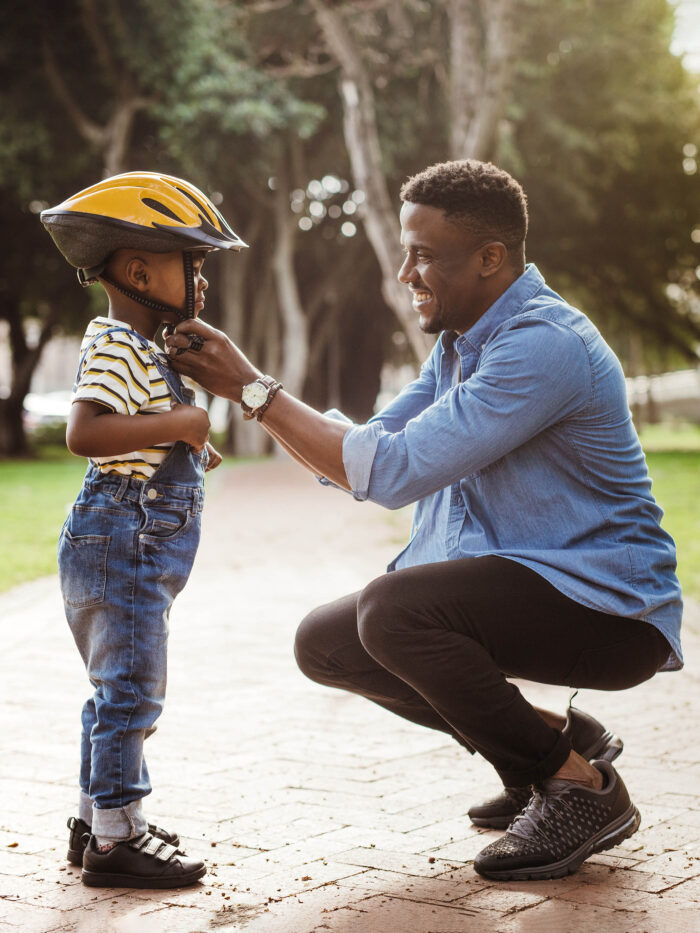
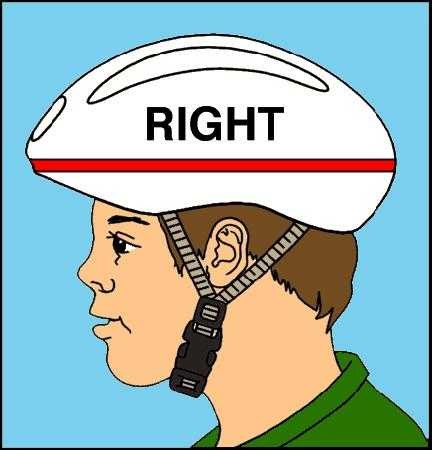
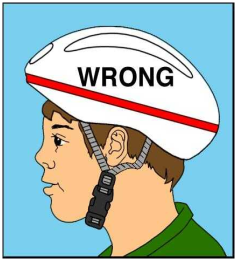
Helmet Safety 101
Helmet safety is crucial for kids when participating in activities such as bicycling, skateboarding or skiing to avoid head injuries. Most serious head injuries to kids can be prevented if they wear a helmet, but it’s important for children to wear the right kind of helmet, and to wear it correctly. Learn how to properly fit and wear a helmet to ensure maximum protection for your child with these tips from CHOC experts.
How to get your child to wear a helmet
To receive the safety benefits of wearing helmet, parents have to make sure their kids will actually wear the helmet.
Michelle Lubahn, CHOC’s community education coordinator, says parents should insist upon it from Day One – no exceptions.
“Starting this habit from the very beginning is your easiest route. For older kids, let them pick out something they like,” she says, adding, “Take the scooter or bike away if they don’t wear their helmet.”
Is it illegal for a child to ride a bike without a helmet?
If children balk at wearing a helmet, ask them why. They may fear they will look like a “geek,” or that their helmet will be ugly or uncomfortable. Talking about it and letting them pick out their helmet or decorate it will help, says Lubahn. Also explain to your child that it’s the law. In California, anyone under the age of 17 must wear a helmet approved by the Consumer Product Safety Commission while riding a bike, scooter, skateboard, roller skates and inline skates.
Tips for buying and fitting a helmet
- The helmet should fit snugly and not slide around on the child’s head. Place two fingers above the child’s eyebrows and measure the circumference of the head there. Take that number with you when you go buy the helmet. When your child tries one on, place those two fingers above his eyebrow and the helmet should be resting there.
- By law, the chinstrap must be buckled. If it’s not buckled, it’s likely to fly off. One of the child’s fingers should fit between the chin strap and the chin.
- If the helmet is on correctly, the straps should form a letter “V” below the ears.
- Make sure the helmet meets federal guidelines set by the Consumer Product Safety Commission. If it’s approved, it should say so on the helmet.
- Generally, most helmets shouldn’t be used again after a major impact or if the helmet gets cracked. If cracked, it should be replaced. Helmets also should not be tampered with for comfort or any reason.
Finally, all helmets were not designed for the same purpose. Your child needs to wear a helmet designed for the activity he or she is doing. For example, a child should not wear a bike helmet to play football or a hockey helmet for bike riding. “You want to use the right helmet for the right activity,” says Dr. Sharief Taraman, a CHOC pediatric neurologist.
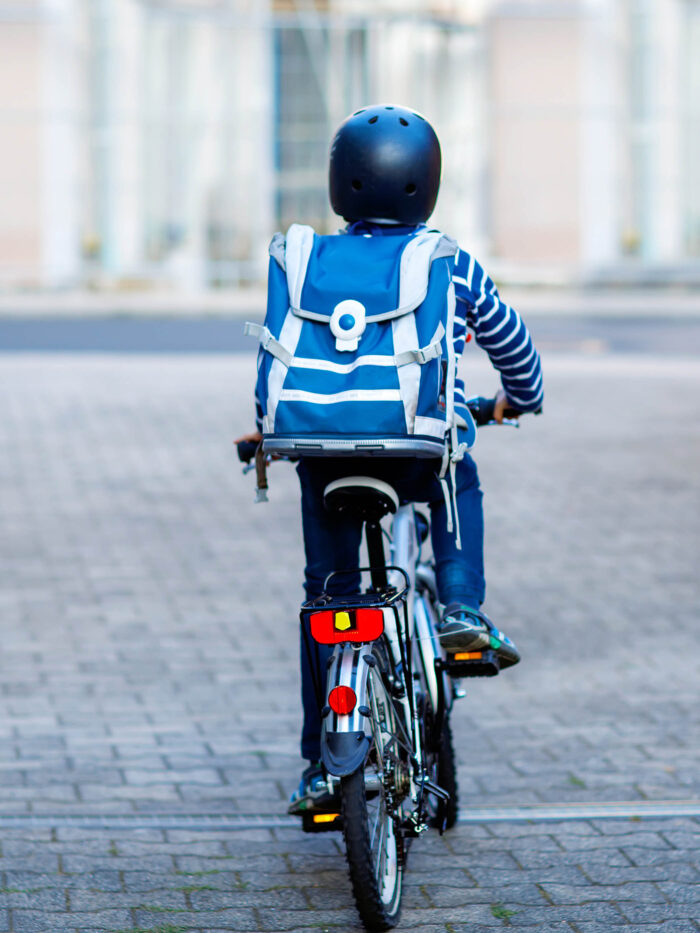
Road Safety Rules
Teaching kids and teens bicycle safety rules of the road is essential for preventing accidents and injuries. This guide provides a list of essential safety rules that parents can teach their children to practice while riding their bikes.
Know the rules of the road when biking
Here are some must-know safety tips to teach kids about bike riding:
- Stop at all stop signs and obey traffic lights just as cars do. Yield to pedestrians, stop at red lights and be especially careful at intersections.
- Always ride in the same direction as cars do. Never ride against traffic.
- Older kids should try to use bike lanes or designated bike routes whenever they can — not the sidewalk! Kids younger than 10 should ride on the sidewalk.
- Never ride at dusk or in the dark.
- Always stop and check for traffic in both directions when leaving a driveway, an alley, or a curb.
- Watch traffic closely for turning cars or cars leaving driveways.
- Don’t ride too close to parked cars — doors can open suddenly.
- Always walk a bike across busy intersections using the crosswalk and following traffic signals.
- When riding in a group, always ride single file on the street.
- When passing other bikers or people on the street, always pass to their left and call out “On your left!” so they’ll watch for you.
- Never share the seat with a friend or ride on the handlebars — only one person should be on a bike at a time. It’s easy to lose balance or suddenly swerve into traffic when riding with a passenger.
- Never wear headphones while biking — it’s very important to hear everyone else on the road at all times.
- Never stand up while riding a bike.
- Never hitch a ride on a moving vehicle.
- Make eye contact with drivers, bikers should make sure that drivers are paying attention and are going to stop before they cross the street.
Signal your turns
It’s important for kids to know the arm signals for changing direction or turning. Make sure they know to never change directions or lanes without first looking behind them, and to always use the correct signals.
Use the left arm for all signals:
- Left turn: After checking behind you, hold your arm straight out to the left and ride forward slowly.
- Stop: After checking behind you, bend your elbow, pointing your arm downward in an upside-down “L” shape and come to a stop.
- Right turn: After checking behind you, bend your elbow, holding your arm up in an “L” shape, and ride forward slowly (or hold your right arm straight out from your side).
One of the best ways to help kids learn safe bike riding is to set a good example by following the rules of the road yourself. Most importantly, always wear your helmet.

Helmet Safety Printable Tip Sheets
Print these tips sheets for quick and easy reference.
Brought to you by the pediatric experts at CHOC.
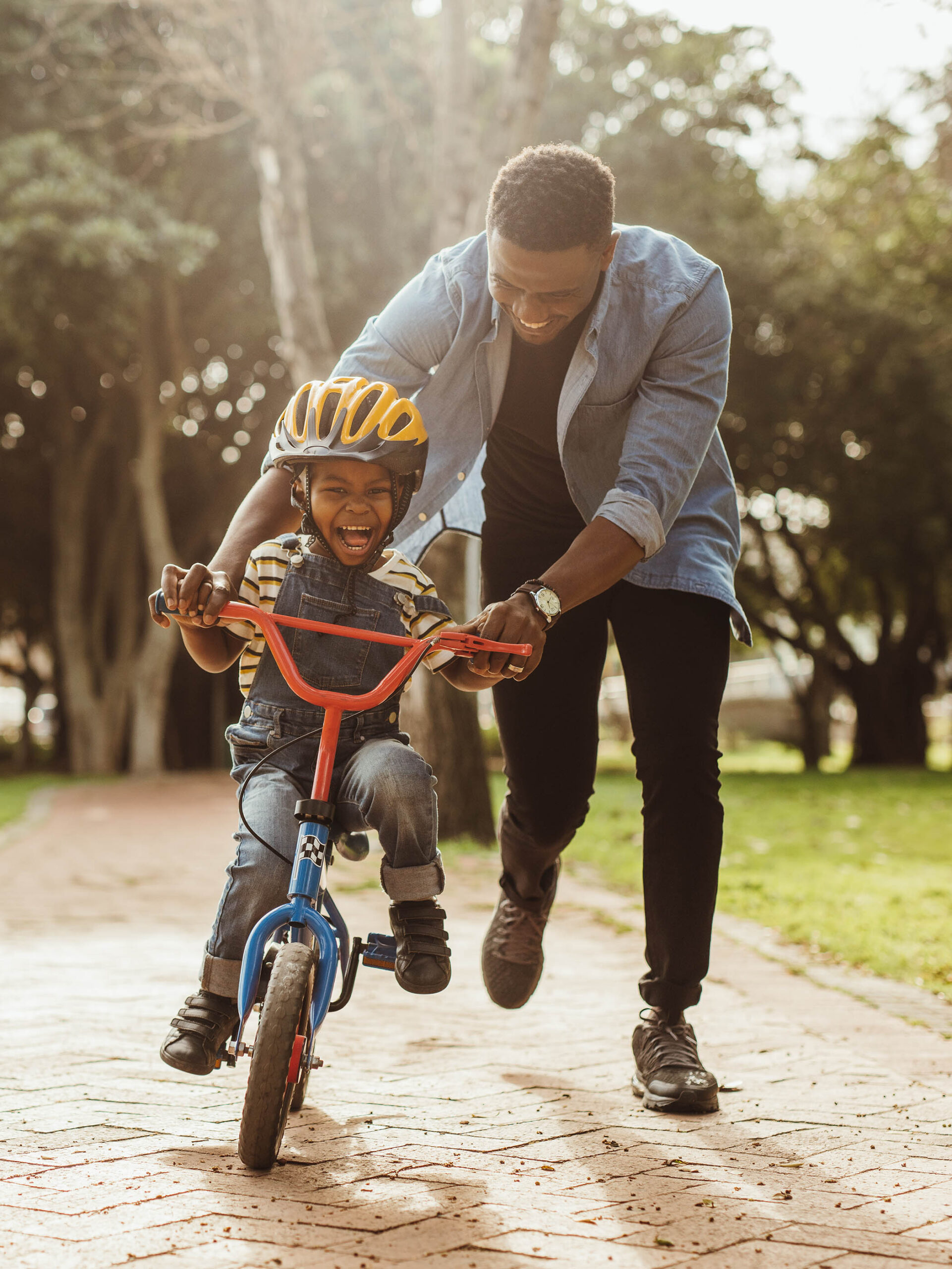
Helmet Safety
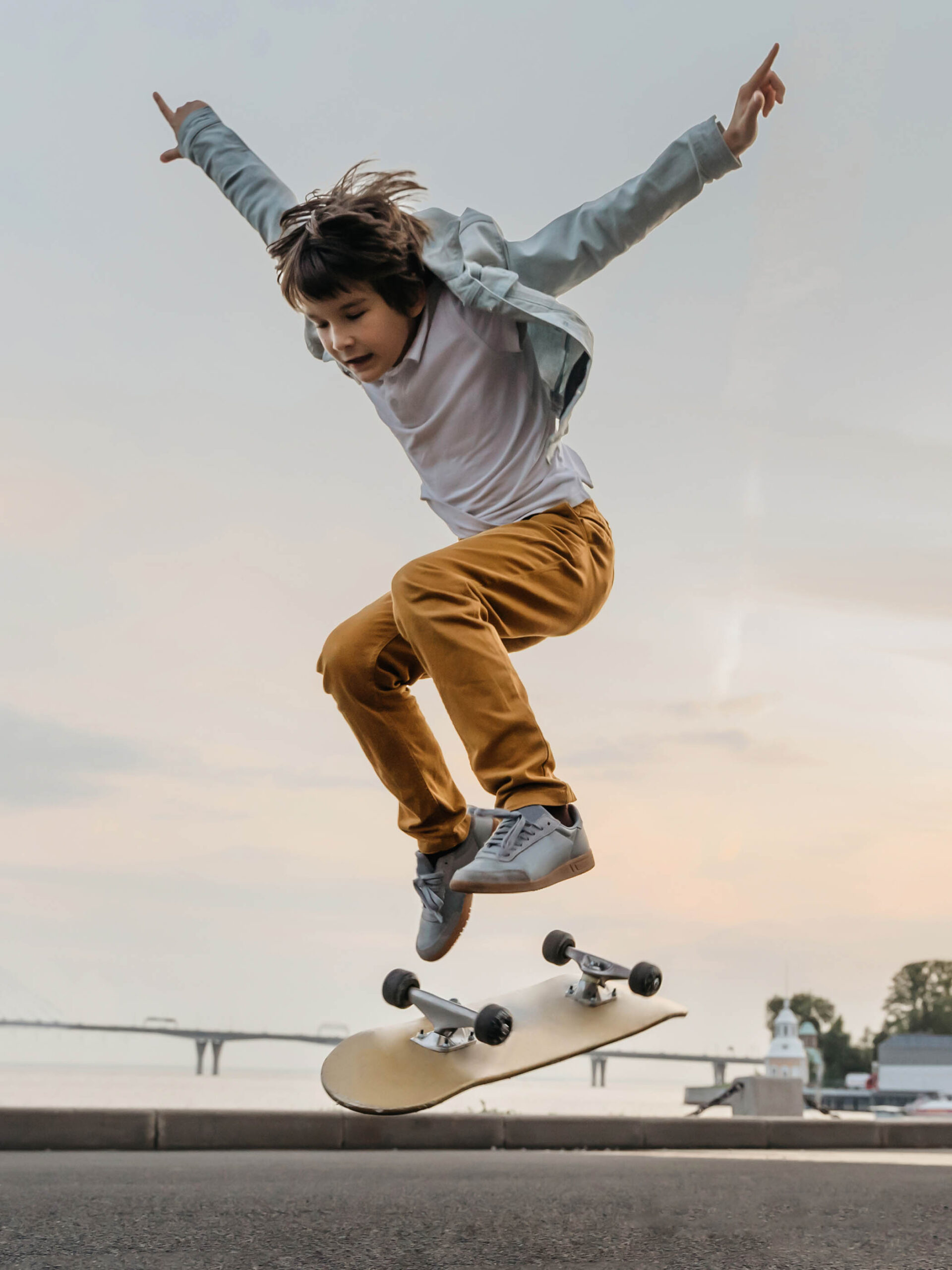
La seguridad con los cascos
Learn more about CHOC’s Pediatric Trauma Center
A traumatic injury can happen at any time: a car accident, a fall, an animal bite. CHOC is ready to treat traumatic injuries 24 hours a day. Critically injured children from across the region are transported and transferred to CHOC for the pediatric expertise only a level 1 pediatric trauma center can provide.
Bike and Helmet Safety Resources
Safety guides
- Bike and helmet safety guide
- Car and travel safety
- Sun safety and skin protection guide
- Home and window safety guide
- Water safety and drowning prevention
Additional Resources
Safety Education Classes
CHOC’s community education department offers a variety of classes and programs designed to keep you and your child safe and healthy, including:
- School programs that can be brought to your school or group at no cost
- Safe Sitter, a nationally accredited childcare course
- “Three Tragic Seconds” drowning prevention program
- Child passenger safety class
The guidance on this page has been clinically reviewed by CHOC pediatric experts.
For more health and wellness resources from the pediatric experts at CHOC:
Sign up for the Kids Health newsletter.
The contents of this webpage, including text, graphics, audio files, and videos (“Materials”), are for your general information only. The Materials are not intended to substitute qualified professional or medical advice, diagnoses, or treatments. CHOC does not recommend or endorse any specific tests, physicians, products, procedures, or other information that may be mentioned on or linked to this webpage. Always call your physician or another qualified health provider if you have any questions or problems. If you think you may have a medical emergency, call your doctor, go to the nearest emergency department, or call 911.
For more health information for your family visit health.choc.org


